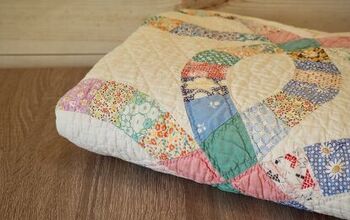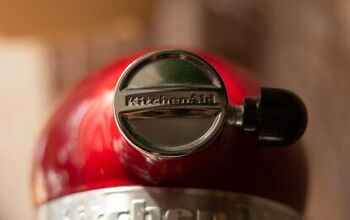Why Are Lamps So Expensive? (Find Out Now!)

Have you ever gone to a custom lighting store? I have, and as someone who understands the power of lighting, it always seemed like a good move. When I saw the price tags, I balked. Lighting has become incredibly pricey, especially when you get to look at high-end lamps. Did you ever wonder why some lamps can cost thousands of dollars?
Lamps are often expensive as a result of the labor that comes with creating handmade lamps, plus the price of raw materials. The right lamp can also be expensive as a result of the brand, the way the light is dispersed, as well as the safety measures included in its creation.
Lamps and lighting of all types can carry a high price tag. It’s time to shine a light on this subject, don’t you agree?
How Much Do Lamps Cost?
If you are worried about being unable to afford a lamp, don’t be. It is possible to find low-end lamps as cheap as $10 a pop, brand new in stores. You can usually find these made out of paper or plastic, with LED lighting.
However, the real kicker to your wallet comes from high-end lamps or lamps that are primarily made from stained or blown glass. Mid-range lamps can be anywhere from $50 to $150, but it quickly balloons from there. Upscale lamps can cost anywhere from $200 to well over $5,000 per fixture.
Why Are Some Lamps So Expensive?
With lamps, you’re often paying for a handful of features that others may consider to be a bit “extra.” Even so, there are multiple reasons why you might pay an arm and a leg for a lamp. These issues below tend to be the big ones:
- Materials. A lamp made from high-end glass, crystal, or bronze will cost more due to the sheer price of its materials alone. Meanwhile, a paper lamp will cost next to nothing.
- Workmanship. Lamps that are made right off a conveyor belt line are going to be the cheapest. If you want to get a handmade lamp, you will have to pay for the labor of an artisan. That can easily cost $20 to $30 per hour. A lamp can take anywhere from 10 minutes to 50 hours to make, depending on the design you choose.
- Limited Releases. A lamp that is handmade will cost more than a mass-produced one. It’s just the way supply and demand works.
- Safety Protocols. A lamp that is poorly made is a light-up fire hazard. That’s why top companies test them to ensure they are safe.
- Antique. An older lamp, especially one like an oil fountain lamp, will fetch a high price simply because it’s harder to find. Historical significance is also important.
- Light Quality. Believe it or not, it takes a lot of skill to make a beautiful lamp that offers good light dispersal. If you find one that offers amazing dispersion, you might want to pay extra for it.
- Brand. While there are not many lamp brands that tend to have a serious impact on buyership, there are a handful that carry enough clout to get a higher price. The most famous, of course, is Tiffany.
Is Getting An Expensive Lamp Worth It?
In most cases, getting an expensive lamp is a personal decision. However, most people who invest heavily in them tend to find that it’s the right move for them. Lamps don’t go bad, especially if they are well-made. There are lamps out there that are still working well after 100 years or more!
When you’re paying a ton of money for a lamp, it’s safe to assume that it’ll be a heritage piece. You are going to be able to pass that down to the next generation. You also will be able to resell it pretty easily.
Do You Have To Spend A Lot Of Money To Get A Good Lamp?
Here’s the good thing about going lamp shopping: you do not have to be a millionaire to get a high-quality lamp. In fact, you can get a pretty decent model for under $150 in most stores. If you want something that looks pricey and doesn’t cost a fortune, hit up your local Home Goods or Home Depot. They have good lighting sections.
How Much Should I Expect To Pay?
While the full gamut of lamp prices can run from $10 to upwards of $5,000, the truth is that you should still have a certain range if you want to get a good pick. Most people should expect to pay between $25 to $150 for a decent table lamp. If you want a floor lamp, the typical “decent” starter price kicks in around $40.
Of course, if you want to have a high quality heirloom piece, you can’t ever spend too much. A lamp that could become a prized antique will usually start at around $500 to $1000, if not more.
Do Lamps Hold Their Value?
Lamps are one of the few furniture items that actually retain their value fairly well as long as they were high quality from the get-go. Most people are not going to pay much for a cheap dollar store lamp. However, if you’re talking about a real Tiffany lamp, or a special crystal artisan lamp? You could get a small fortune in retail.
The only real exception to the rule deals with lamps that have LED lights built straight into the body. When the LEDs in your lamp burn out, you can’t really replace them if they are a part of your fixture. You would have to throw out the whole fixture. This puts LED-made lamps on a timer.
Once LEDs in a lamp that has them permanently installed into the structure die out, the lamp itself is totally useless. It turns into glorified scrap metal. So, if you want to have a lamp that you can sell to an antique store, make sure you can remove the lights and replace them with bulbs as you see fit.
Does It Make Sense To Buy A Lamp New?
It depends on what you want to get. It’s always possible to get a vintage Victorian-style lamp at an antique shop or a yard sale if you want one. In fact, it’s probably easier to do than trying to find one at one of those yard sales than it would be to find it at a typical furniture store.
However, we’re going to be honest. A lot of people want to buy newer lamps because they tend to be safer. There are safety protocols and manufacturing standards in place that didn’t exist in the 70s. If you have kids or are worried about fire safety, it makes sense to buy new.
What Is The Most Expensive Lamp Brand In The World?
Remember when I mentioned that you might want to buy a Tiffany lamp if you want it to retain value? Well, that’s a thing. Tiffany isn’t just a famous name from the 70s and 80s. Though there are other lamp companies that have higher-priced items on average, the truth is that this retro name currently holds the title as the most expensive lamp maker in the world.
Why, you ask? It’s actually quite simple. Tiffany currently holds the title as the lamp maker with the most expensive vintage lamps in the world. The most expensive lamp in the world is the “Pink Lotus” lamp from Tiffany, currently valued at a jaw-dropping $2.8 million.
Most of the lamps made by Tiffany tend to cost upwards of $10,000 at the low end. It’s not unusual to hear about a vintage Tiffany lamp going for upwards of $500,000. As a result of their sky-high resale value, we have to tip our hats to Tiffany. They are the most expensive lamp brand in the world, and they rightfully earned that title.
Related Questions
How much does it cost to repair a lamp?
This depends on what the issue is with your lamp. For most lamp models, you should expect to pay between $30 to $150 for repairs. However, if you are dealing with an antique lamp, then the price can be far higher. Refinishing an old lamp can easily cost as much as $200 or more, depending on the material that you need.
Is it possible to rewire an antique lamp?
As lamps age, the electrical circuitry will start to age. Eventually, those circuits and wiring will start to wear and tear. If you want to be able to safely use your lamp in upcoming years, you will need to rewire it. With most antique lamps, this is actually fairly easy to do. We still suggest that you hire professionals to rewire your lamp, since it still will affect your lamp’s ability to function.
Is it okay to leave an antique lamp on overnight?
While LED lamps that burn at a low wattage have a minimal chance of ever lighting on fire, the same cannot be said about their predecessors. Older lamps should only be used when you are awake, and for eight hours at a time at most. Since they do have a tendency towards flammability, it’s something to worry about.

Ossiana Tepfenhart is an expert writer, focusing on interior design and general home tips. Writing is her life, and it's what she does best. Her interests include art and real estate investments.
More by Ossiana Tepfenhart



























